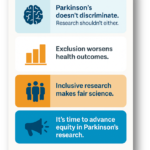It’s all fun and games until your health becomes one big puzzle to solve, and little do many people know what risks and hazards might surround us during our favorite summertime activities. I learned this personally after what should have been an innocent business trip turned into a year-and-a-half nightmare for me after contaminated water made me sick. I contracted bacteria that led to a secondary chronic inflammatory breast disease. What happened to me is an emerging diagnosis across the world and compels me to share what I have learned from my own experience in hopes to help others.
When summer arrives, so many of us seek out our favorite adventures, whether that may be swimming (pools, lakes, rivers, oceans), fishing, beach visits, canoeing or kayaking, hiking, gardening, mud races, sunbathing, cookouts, and more. These all sound innocent and enjoyable—unless, of course, you or someone you know becomes a victim like I did after contracting a bacteria known as Corynebacterium kroppenstedtii, with an origin highly associated with water, sewer, and soil. Research shows over 70 percent of Americans go swimming in the summer months.
Swimming has always been one of my favorite activities. I have swum with dolphins about 15 different times in my life, even getting in some of the slimiest, grossest lagoons, not thinking a thing of it. I grew up using a family pool every summer. I have enjoyed pools in swim clubs and on cruise ships. I have even been boating and jet skiing on rivers, lakes, and oceans across the world. I’ve been parasailing a few times too. I was fearless and always thought I must be a Floridian trapped in an Ohioan body, as much as I have always been fond of the water.
Now, something I once was fearless of, I’m fearful of, as unfortunately swimming is now part of a pastime memory for me—something I feel has been taken away after the infection I once suffered from for so long.
I feel an ounce of prevention is worth a pound of cure, and if it means I could potentially avoid contracting “GM” again, it would be worth it to me. I avoid all swimming, even chlorinated pools. The health of a pool is only as good as the caretaker of it and the optimal hygiene of those using it. According to the CDC, waterborne illnesses cause over 7 million individuals to become sick every year in the U.S., and can cost the health care system a whopping $3 billion. I’ll say this: My business trip certainly cost me more than what I earned from going, with my numerous doctor visits, surgery, wound care, and antibiotics for nine months. Knowing this data, perhaps there is an opportunity to help better educate Americans on this topic, and that is one influence for writing and publishing this article.
A variety of illnesses can occur from contaminated water, and there is a multitude of ways to contract them. Pathogens like bacteria, parasites, toxins from algae blooms and red tide, and sargassum seaweed—which can lead to hydrogen sulfide and ammonia exposures and may contain contaminants like pesticides and heavy metals—can all pose threats. Waterborne illness can happen from many sources, and a cut or an abrasion isn’t necessary to get sick. Any bodily opening, even breast ducts as in my case, can be opportunistic. Oral ingestion, eyes, nose, etc., are natural openings that can be a source of entry for some pathogens as well. Falling off a canoe or kayak in contaminated water comes with risks too.
Environmental factors can also lead to increased risks of waterborne illness, such as during floods or hurricanes, as those waters can contain all sorts of pathogens. These natural disasters come with a slew of potential dangers that can be lurking in the water. Even fishing can be an activity that leads to illnesses such as skin conditions and musculoskeletal concerns, to name a few.
Hiking is another activity commonly enjoyed during summer months. One small thing that can lead to one big problem when it comes to hikes—besides contaminated creeks—is something I personally fear: ticks. Not to say you can’t get bitten just walking through your yard, gardening, or by a pet bringing a tick indoors, but hikes are for sure a common way to expose yourself to the many diseases ticks can transmit.
Besides the bacteria Borrelia burgdorferi that causes Lyme disease, ticks can also transmit various co-infections that can be just as bad—if not worse—to treat, and are often missed within health care settings, especially if the right questions aren’t being asked by the doctor. I think it’s wise to research how you can protect yourself and your family from potential tick bites, as that is the best way to learn. If you are bitten, there is a recommended way to remove the tick. You can also send the tick itself out to be tested, and there are several online companies to do so.
It can be more affordable to test the tick directly and know what to potentially treat the person bitten for. Lyme disease testing can result in false negatives, so this route can be more accurate.
On the topic of vector-borne illness, one better-understood health risk is that of a mosquito bite. At least a dozen different diseases can be transmitted from mosquitoes, some not necessarily common in the U.S., but certainly during your travels. West Nile is a virus that is more commonly recognized and, like ticks, can also transmit co-infections.
Another annoying critter is no-see-ums or sand flies, which you can experience at beaches. A lot of beachgoers think these are no big deal beyond the red bites they leave behind and the itching they can cause, but in fact, in worse cases, they can cause Leishmaniasis.
If there is one thing I love, it’s sunshine. I appreciate a little bronze glow but also understand the risks of skin cancers. Beyond enjoying the sunshine rays and vitamin D synthesis, there are illnesses that can be affiliated with the sun, like heat stroke, sun rashes, and severe sunburns if we’re not all careful.
Taking precautions and being mindful of the risk factors can help everyone enjoy their time in the sun more safely. With sunshine also come outdoor events like mud races. I know far too many dangers that can arise from these events, and they are one way to contract “GM” as well. Pathogens can be found in the mud and water at these events, and ingestion or direct contact can be a way to contract them.
With this sunshine, we can also think cookouts. Who doesn’t love a great cookout this time of year? I certainly do. However, it’s important to understand the foodborne illnesses that can accompany this common summertime activity. Foods left in the sun or in higher temperatures can quickly spoil, or foods outdoors being exposed to flies can lead to their own diseases.
Even some foods like cantaloupes, watermelons, and avocados should be washed prior to cutting into them, as they can contaminate the food with bacteria. Believe it or not, many people don’t know that. Cleaning a grill with a bristle brush comes with risks too, as a bristle can become dislodged from the brush and get trapped in a food item on the grill, then be swallowed by whoever consumes it.
There are also more understood risks like undercooked meat or even raw oysters that can cause several illnesses like hepatitis A, norovirus, or vibriosis. I know many who travel in the summer to coastal areas like to indulge in some raw oysters, but it’s important to recognize those risks.
I’m not trying to dim your summer fun, but hopefully, by sharing this information, you and yours can make sure you enjoy everything summer has to offer—while safely doing so. There’s definitely a dark side to summer if we’re all not careful.
Tami Burdick is a patient advocate and author of Diagnosis Detective: Curing Granulomatous Mastitis.



















![Catching type 1 diabetes before it becomes life-threatening [PODCAST]](https://kevinmd.com/wp-content/uploads/Design-2-190x100.jpg)


![How doctors can reclaim control in a corporate system [PODCAST]](https://kevinmd.com/wp-content/uploads/Design-3-190x100.jpg)


